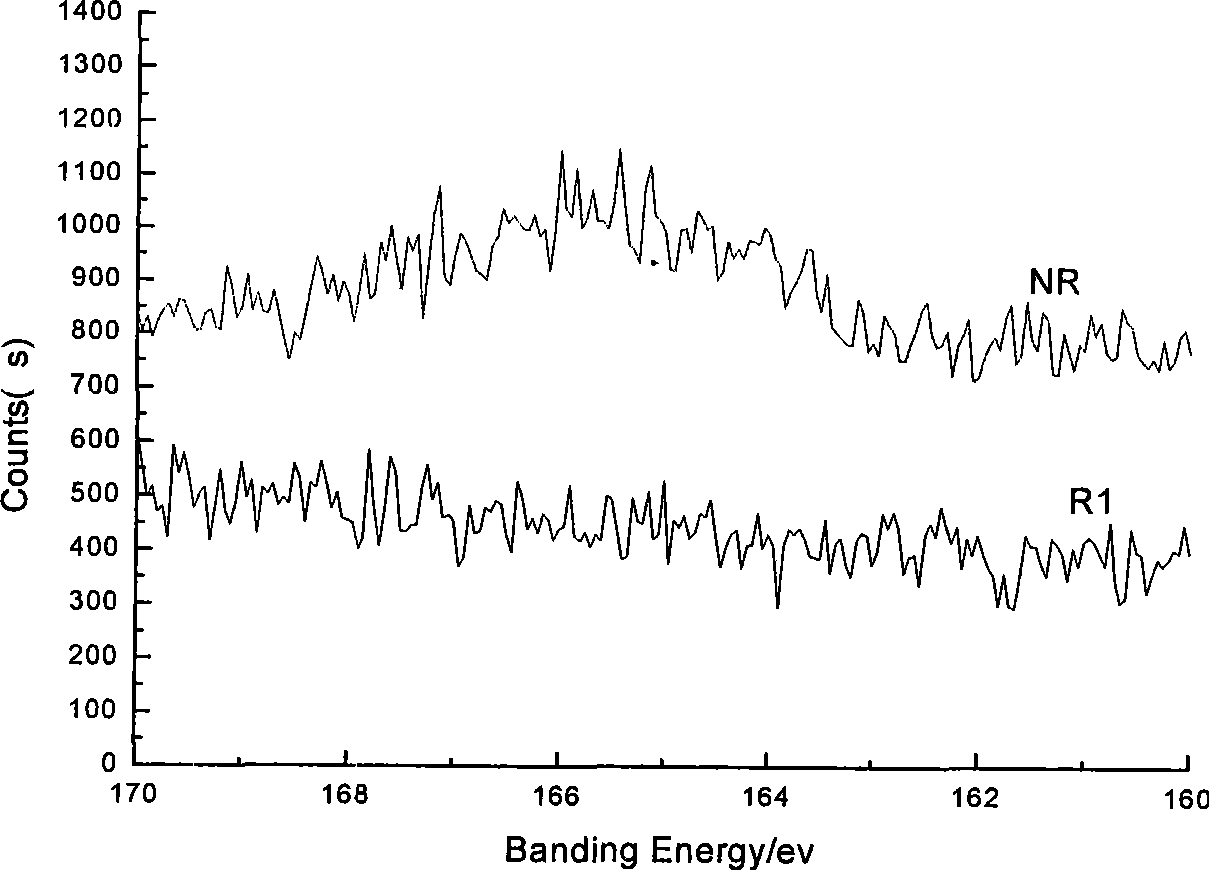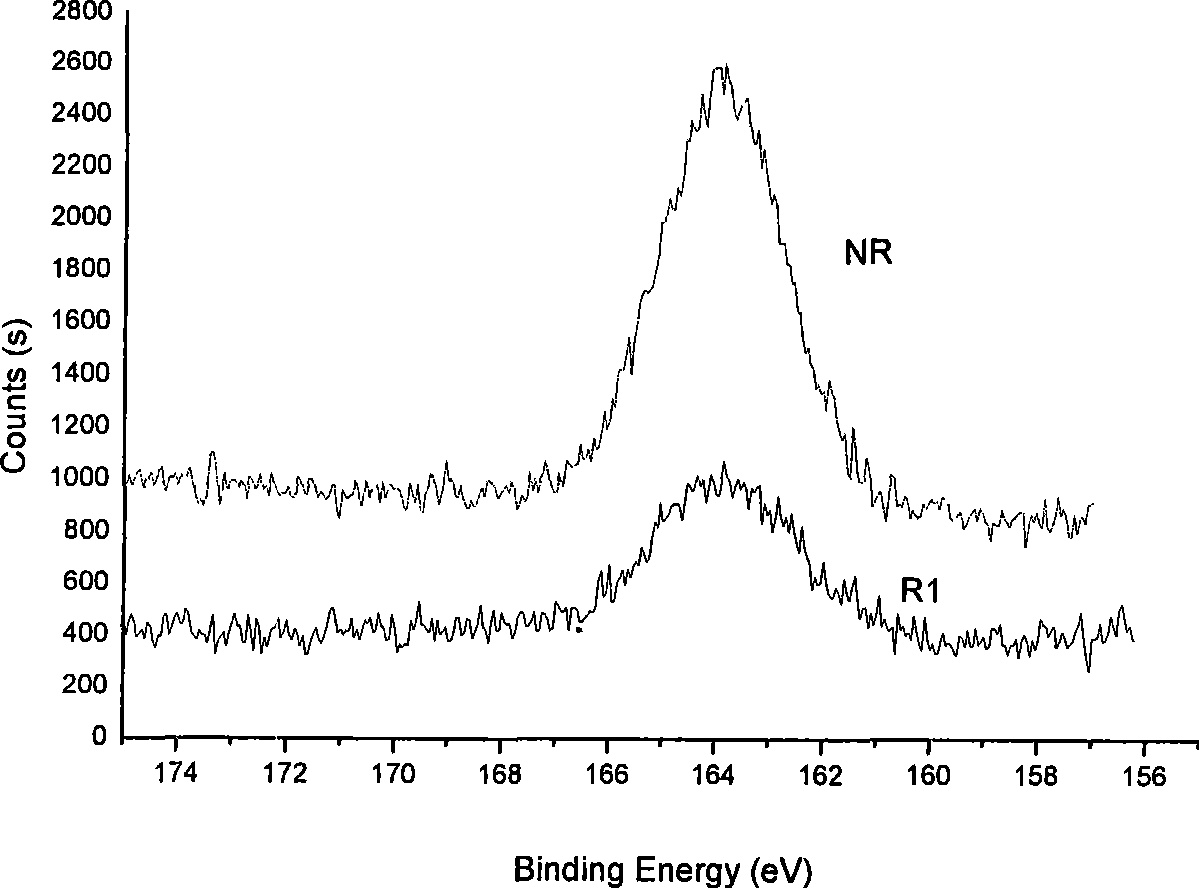Method for reproducing waste rubber by using microorganism
A technology for regenerating waste rubber and microorganisms, applied in the field of waste rubber regeneration, can solve the problems of rubber main chain bond oxidation, serious secondary pollution, and low production efficiency, and achieve the effects of mild conditions, low equipment requirements, and short growth cycle
- Summary
- Abstract
- Description
- Claims
- Application Information
AI Technical Summary
Problems solved by technology
Method used
Image
Examples
Embodiment 1
[0049] 1. Materials
[0050] 1 Strains: Saccharomyces cerevisiae.
[0051] 2 Natural rubber powder: Yunbiao 1# Yunnan Natural Rubber Industry Co., Ltd.
[0052] 3 media
[0053](1) Slant medium: glucose 20g / L, yeast extract powder 10g / L, peptone 10g / L, agar 15g / L; pH 5.0-6.0, sterilized at 115°C, 0.1Mpa for 30min;
[0054] (2) Seed medium: glucose 50g / L, yeast extract powder 10g / L, peptone 10g / L, malt extract powder 5g / L; pH 5.0-6.0, 115°C, 0.1Mpa sterilization for 30min;
[0055] (3) Desulfurization medium: glucose 40g / L, yeast extract powder 15g / L, peptone 15g / L, malt extract powder 5g / L, MgSO 4 ·7H 2 O5g / L, K 2 HPO 4 ·3H 2 O 1g / L, KH 2 PO 4 1g / L, ZnSO 4 0.044g / L, FeSO 4 ·7H 2 O0.03g / L, CuCl 2 0.016g / L, MnSO 4 0.019g / L; pH 5.0, 115°C, 0.1Mpa sterilization for 20min.
[0056] 4 Instruments and equipment: shaking incubator, reactor.
[0057] 2. Method
[0058] 1 Culture of seed solution
[0059] (1) Primary seed liquid: take Saccharomyces cerevisiae cells...
Embodiment 2
[0065] 1. Materials
[0066] 1 Strain: Saccharomyces cerevisiae.
[0067] 2 Natural rubber powder: Yunbiao 1# Yunnan Natural Rubber Industry Co., Ltd.
[0068] 3 Medium:
[0069] (1) Slant medium: glucose 20g / L, yeast extract powder 10g / L, peptone 10g / L, agar 15g / L; pH 5.0-6.0, 115°C, 0.1Mpa sterilization for 30min;
[0070] (2) Seed medium: glucose 50g / L, yeast extract powder 10g / L, peptone 10g / L, malt extract powder 5g / L; pH 5.0-6.0, 115°C, 0.1Mpa sterilization for 30min;
[0071] (3) Desulfurization medium: glucose 40g / L, yeast extract powder 15g / L, peptone 15g / L, malt extract powder 5g / L, MgSO 4 ·7H 2 O5g / L, K 2 HPO 4 ·3H 2 O 1g / L, KH 2 PO 4 1g / L, ZnSO 4 0.044g / L, FeSO 4 ·7H 2 O0.03g / L, CuCl 2 0.016g / L, MnSO 4 0.019g / L; pH5.5, 115℃, 0.1Mpa sterilization for 20min.
[0072] 4 Instruments and equipment: shaking incubator, reactor.
[0073] 2. Method
[0074] 1 Culture of seed solution
[0075] (1) Primary seed liquid: take Saccharomyces cerevisiae cells...
Embodiment 3
[0081] 1. Materials
[0082] 1 Strains: Saccharomyces cerevisiae.
[0083] 2 Natural rubber powder: Yunbiao 1# Yunnan Natural Rubber Industry Co., Ltd.
[0084] 3 media
[0085] (1) Slant medium: glucose 20g / L, yeast extract powder 10g / L, peptone 10g / L, agar 15g / L; pH 5.0-6.0, 115°C, 0.1Mpa sterilization for 30min;
[0086] (2) Seed medium: glucose 50g / L, yeast extract powder 10g / L, peptone 10g / L, malt extract powder 5g / L; pH 5.0-6.0, 115°C, 0.1Mpa sterilization for 30min;
[0087] (3) Desulfurization medium: glucose 40g / L, yeast extract powder 15g / L, peptone 15g / L, malt extract powder 5g / L, MgSO 4 ·7H 2 O5g / L, K 2 HPO 4 ·3H 2 O 1g / L, KH 2 PO 4 1g / L, ZnSO 4 0.044g / L, FeSO 4 ·7H 2 O0.03g / L, CuCl 2 0.016g / L, MnSO 4 0.019g / L; pH5.0-6.0, 115℃, 0.1Mpa sterilization for 20min.
[0088] 4 Instruments and equipment: shaking incubator, reactor.
[0089] 2. Method
[0090] 1 Culture of seed solution
[0091] (1) Primary seed liquid: take Saccharomyces cerevisiae cel...
PUM
| Property | Measurement | Unit |
|---|---|---|
| Crosslink density | aaaaa | aaaaa |
| Crosslink density | aaaaa | aaaaa |
| Crosslink density | aaaaa | aaaaa |
Abstract
Description
Claims
Application Information
 Login to View More
Login to View More - R&D
- Intellectual Property
- Life Sciences
- Materials
- Tech Scout
- Unparalleled Data Quality
- Higher Quality Content
- 60% Fewer Hallucinations
Browse by: Latest US Patents, China's latest patents, Technical Efficacy Thesaurus, Application Domain, Technology Topic, Popular Technical Reports.
© 2025 PatSnap. All rights reserved.Legal|Privacy policy|Modern Slavery Act Transparency Statement|Sitemap|About US| Contact US: help@patsnap.com



